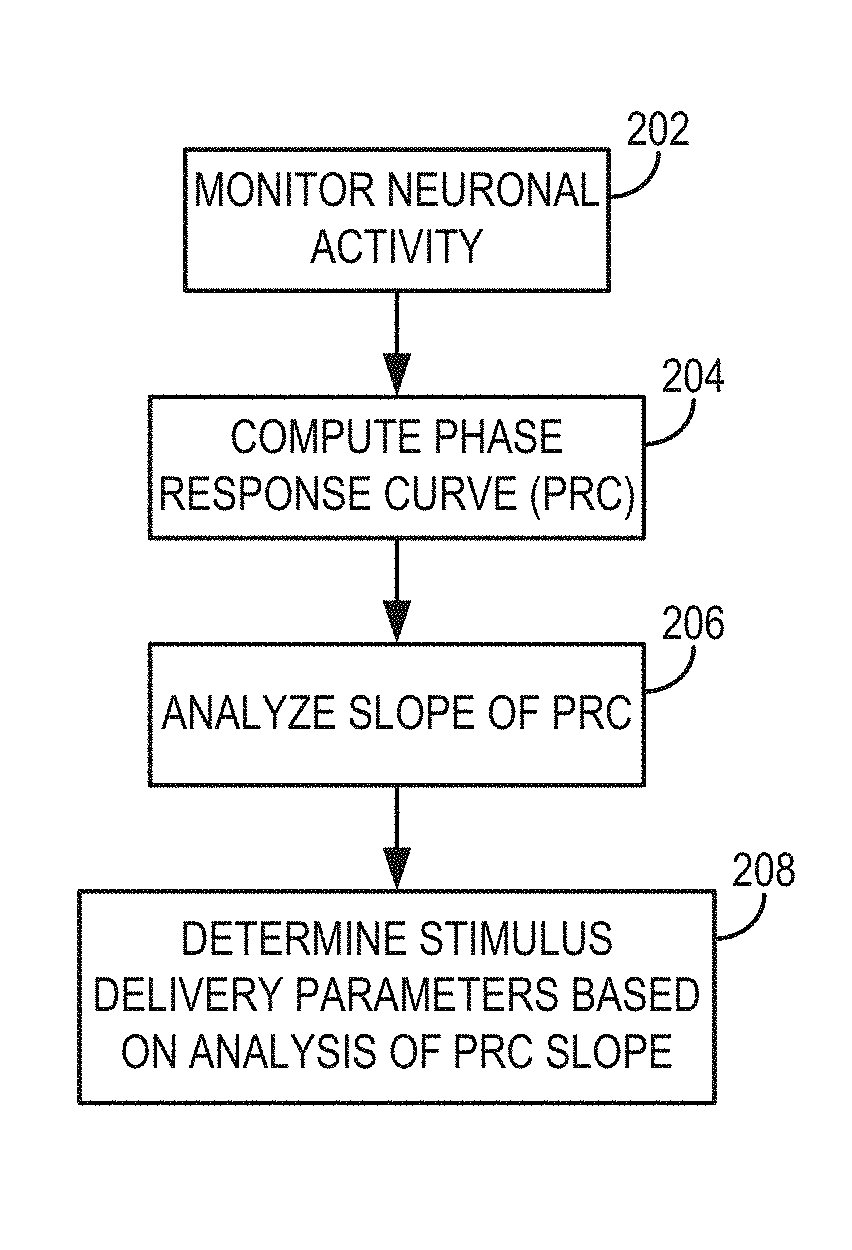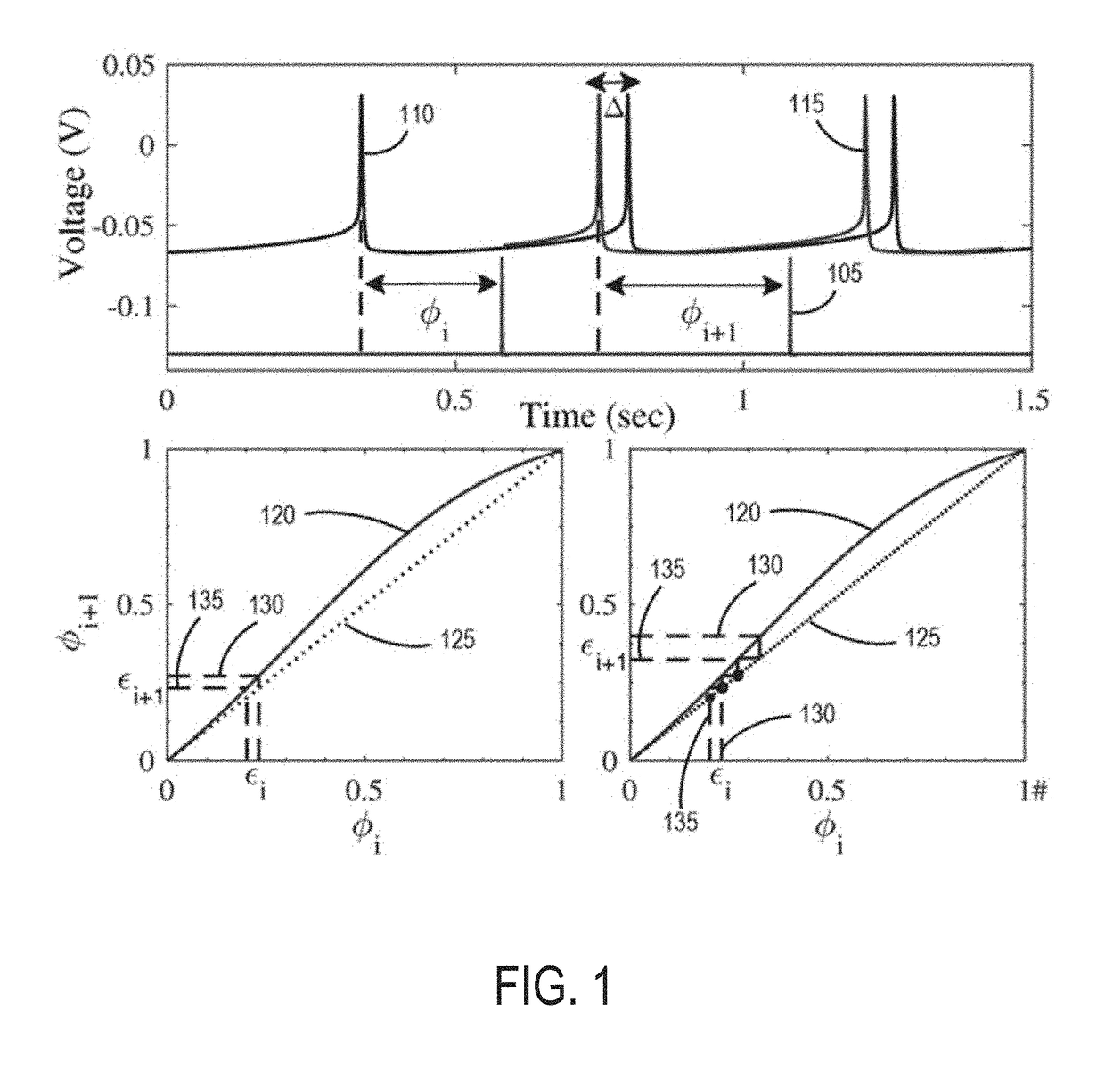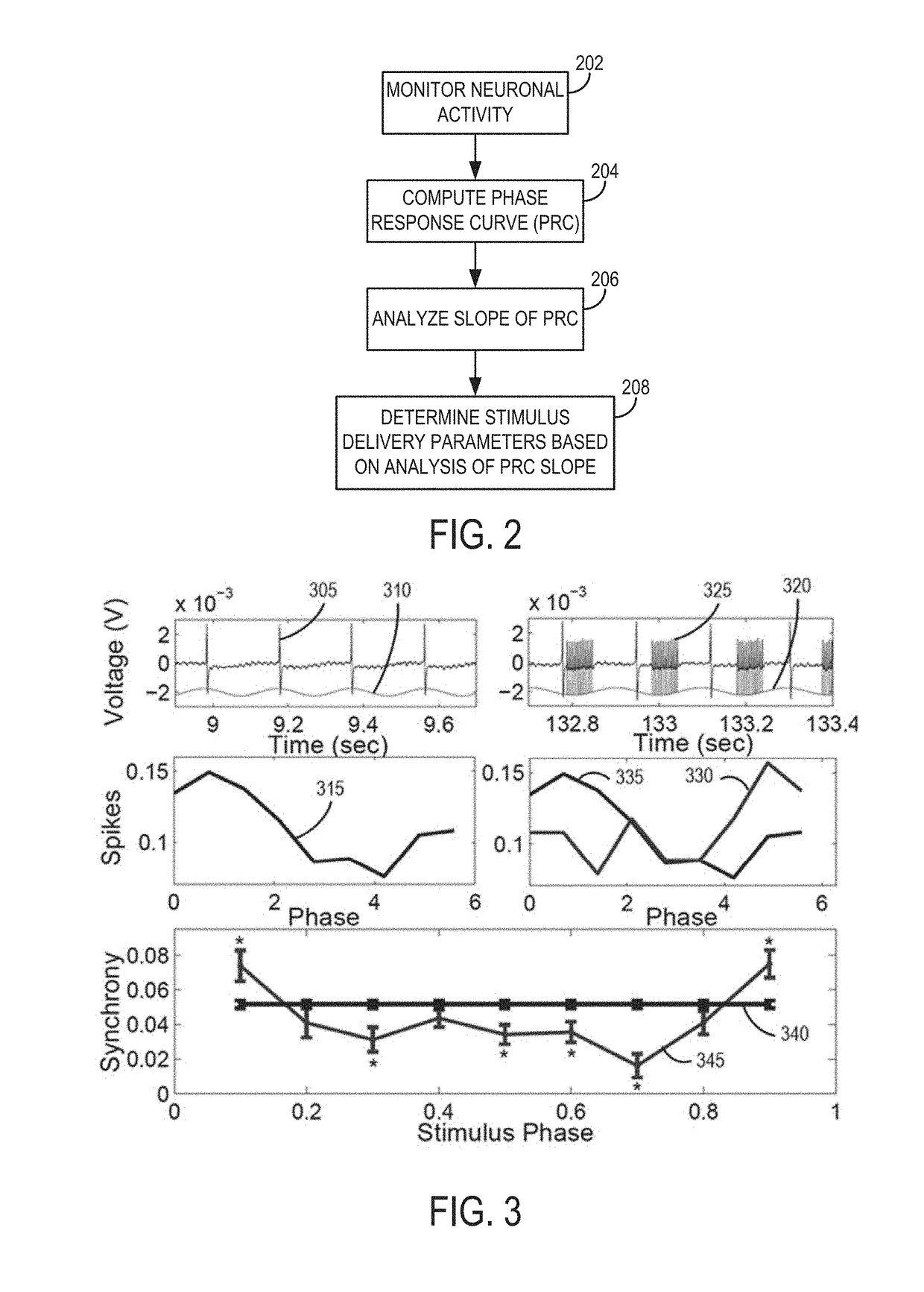Systems and methods for tuning closed-loop phasic burst stimulation based on a phase response curve
a closed-loop phasic burst and phase response technology, applied in the field of closed-loop stimulation, can solve the problems of changing the firing rate and pattern of basal ganglia neurons, unable to effectively use a closed-loop approach to set stimulation parameters, and time-consuming trial and error process, so as to reduce time, improve patient quality of life, and suppress pathological oscillation
- Summary
- Abstract
- Description
- Claims
- Application Information
AI Technical Summary
Benefits of technology
Problems solved by technology
Method used
Image
Examples
example
Single Cell and Computational Model Experiments
[0060]Materials and Methods
[0061]Slice Preparation. Brain slices containing the substantia nigra pars reticulata (SNr) were prepared using standard methods, such as those described, for example, by N. E. Hallworth, et al., in “Apamin-sensitive small conductance calcium-activated potassium channels, through their selective coupling to voltage-gated calcium channels, are critical determinants of the precision, pace, and pattern of action potential generation in rat subthalamic nucleus neurons in vitro,”The Journal of Neuroscience, 23(20):7525-7542, 2003. Brain slices were prepared from Sprague Dawley rats aged 18-25 days. The animals were deeply anesthetized using isoflurane before being perfused transcardially with 10 ml of ice-cold artificial cerebral spinal fluid (aCSF) composed of (in mM): 126NaCl, 26NaHCO3, 10 D-glucose, 2.5KCl, 1.25NaH2PO4, 2CaCl2, and 2MgSO4. Following decapitation, the animals' brains were extracted and chilled in...
PUM
 Login to View More
Login to View More Abstract
Description
Claims
Application Information
 Login to View More
Login to View More - R&D
- Intellectual Property
- Life Sciences
- Materials
- Tech Scout
- Unparalleled Data Quality
- Higher Quality Content
- 60% Fewer Hallucinations
Browse by: Latest US Patents, China's latest patents, Technical Efficacy Thesaurus, Application Domain, Technology Topic, Popular Technical Reports.
© 2025 PatSnap. All rights reserved.Legal|Privacy policy|Modern Slavery Act Transparency Statement|Sitemap|About US| Contact US: help@patsnap.com



